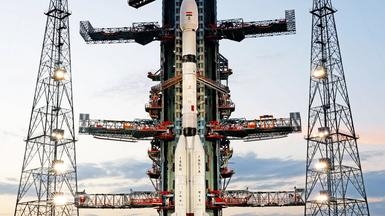On the evening of 30 July 2025, India successfully launched the NASA-Isro Syntic Aperture Radar (NISAR) satellite from the GSLV-F16 rocket from the Satish Dhawan Space Center in Sriharikota. The launch took place at 5:40 pm local time, with the GSLV-F16 to put NISAR in a Sankeronus Polar orbit-thus this was the first mission of GSLV for ISRO to send a heavy radar-based Earth-Nirman Satellite. It was also a 102nd launch success of ISRO from Sriharikota.
The cost of this satellite is said to be around $ 1.3 to $ 1.5 billion, and it has been developed by NASA and ISRO. It contains S-band radar systems integrated by NASA and ISRO, which can provide a details of the nisar refractory season or a subtle change up to the centimeter level in the Earth’s surface, despite the day/night boundaries.
NISAR will mapping almost all land and icy areas of the Earth in an automatic way every 12 days. Its objective is to track the supernatural disasters like glaciers, ice-leaves, landslides, floods and superficial reshuffle such as land collapse or lift. This will not only improve disaster responding capacity, but will also add invaluable scientific data to areas such as permanent forestry, water resources and agricultural monitoring.
After the launch, the next 90 days time is scheduled for the satellite’s in-orbit checkout period, with its gold-live radar antennas widening and all the sensors and systems will be checked and calibrated. These processes will be completed in about a week, and scientific operations are expected to start by October 2025.
Experts have called it “the most important mission in Earth Observation Satellites”. Arbind Ravichandran, the founder of Terravatch Space, said it would help to bridge the data gap due to frequent clouds and limited ground infrastructure in Global South. Due to its INSAR technical feature, it will also be able to do the surface movement on the maping meter-scale of movement-which will prove revolutionary in modeling, climate change management and disaster preparation.
Both ISRO and NASA are proud of its achievement for Indian and world scientific communities. This mission has proved how international cooperation can be strategically important to face scientific and environmental challenges. This NISAR mission is not just a technical achievement, but a global responsibility – India and the US partnership determines new directions in global climate investigation and disaster warning systems.








